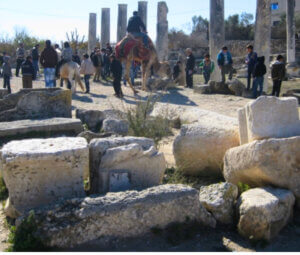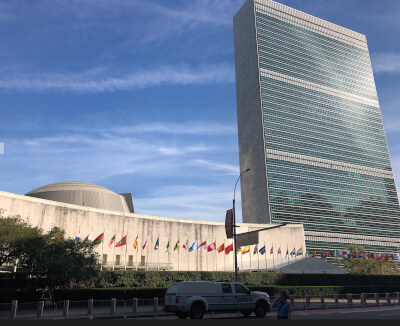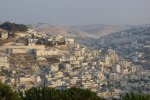Israel Civil Administration Plans to Seize 1,800 Dunams in Sebastia — the Largest Antiquities Expropriation to Date
It is registered in the land registry in the name of Palestinian owners, who have been given 14 days to submit objections. The government has already allocated more than 30 million shekels for developing the site.

Under the Oslo Accords, signed by Israel, it should have been transferred to Palestinian administration long ago. Israeli greed harms not only the landowners, but also the prospect of a peaceful solution that upholds the rights and heritage of both peoples.”
Land expropriations for antiquities development have been carried out in the West Bank only five times since 1967, to the best of our knowledge. In several of those cases, Palestinians later lost access to the sites. Full details and historical examples are available in the comprehensive report on our website.
Sebastia is notable because the area targeted for expropriation functions as an economic, cultural, and tourism hub for local residents and has been open to the public. Shops, restaurants, guiding services, and guest rooms operate around the site, which lies among the village’s homes. The planned expropriation concerns the western section, an area with fewer homes and surrounded by olive groves.
The scale of the plan is unusually large. Authorities approved the seizure of 1,800 dunams, compared with the previous record of 286 in Susya. Although much of the land designated for expropriation has been classified as archaeological, the part currently visited by tourists covers only about 60 dunams.
The notice is a continuation of earlier government decisions regarding Sebastia. In 2023, the government approved a 32-million-shekel plan to develop the site, and in 2025, the Civil Administration began archaeological excavations.
At the nearby Mas’udiya (Sebastia) railway station, construction has begun on a tourism settlement. Tourism has been used for settlement purposes before, but in the northern West Bank, it now appears tied to broader plans that include the Homesh and Sa-Nur settlements.
International law permits expropriation in occupied territory only when it serves the needs of the occupied population. In the case of Sebastia, it is unclear how the plan would benefit Palestinians. The development would ease access for Israelis while excluding Palestinians from their land and from the archaeological site.




- Microsoft worker disrupts Ignite Conference keynote speech, protests target conference venue in San Francisco, Microsoft headquarters in Redmond, Microsoft European hub in Ireland - November 19, 2025
- Israel Civil Administration Plans to Seize 1,800 Dunams in Sebastia — the Largest Antiquities Expropriation to Date - November 19, 2025
- Arab Center Washington DC writer addresses UN Security Council vote on Gaza - November 19, 2025
























